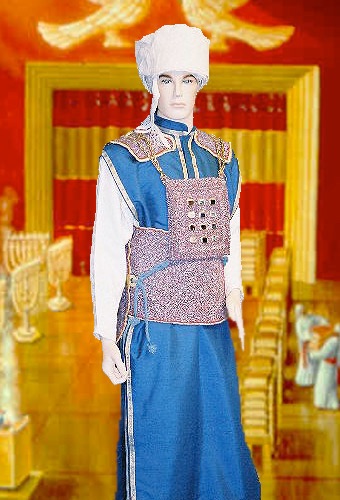The Israelites are instructed further in preparations for the Tabernacle. Oil for the menorah, Priests clothing, priests consecration, and the incense table.
The oil for the menorah is interestingly commanded to all Israelites to bring pure olive oil. So why olive oil? Olives are a worldwide symbol of peace. Olives take a long time to grow, and only in peaceful times can olives be effectively grown and harvested. The ner tamid (eternal light) in the synagogue above the ark is a reminder of the continual light of the menorah before the Holy of Holies.
So why are the Tabernacle and the priestly garments so ornate, so grand, so regal? Is this a reflection of the Lord? Why not modest and humble? Why not plain and common? G~d made everything, and much of it seems common. Would it be easier to relate to G~d if presented with a more common, understandable, everyday “face?”
The grandeur of the Tabernacle helps us to realize that G~d is transcendent of our physical world. The Lord is “other,” outside the common. A burning thorn bush which is not consumed. A cloud by day and pillar of fire by night. One who fights for us, heals us, comforts us, forgives us, redeems us, even when we can do none of these ourselves. If it were possible to put:
The beauty of the Grand Canyon
the vast sea
the great plains
majestic mountains
a rose
the stars.
The wonders of math
science
physics
biology
astronomy
birth.
The mysteries of the sea
of life
of love
INTO the Tabernacle, or any “house of G~d,” they would far surpass the ornamentation we produce with all our skills. Since this is not possible, we are instructed to make a beautiful and ornate place where man can experience a wispy, gently touch from G~d. Where the symbols represent something ethereal about our Creator. We can not do more than that.
And for the adventurous and mystical among us, G~d invites us to meet in the rest of the Creation; on mountain tops, in a coral reef, through a microscope, and in a loving embrace. G~d is not limited, nor is he lost. We, mankind, just rarely take the time to visit.
Thanks to Rabbi Dov Linczer for his weekly Parsha insights. http://www.rabbidovlinzer.blogspot.com/
Much more information at http://www.templeinstitute.org/
Picture from http://www.templeinstitute.org/garments_images/garments_2.jpg
This picture is very interesting as the priests have no beards.
Here are some study notes:
Parsha T’tsaveh 5771.doc
Parsha T’tsaveh 5771.pdf
Parsha ttsaveh and Purim 5770.doc
